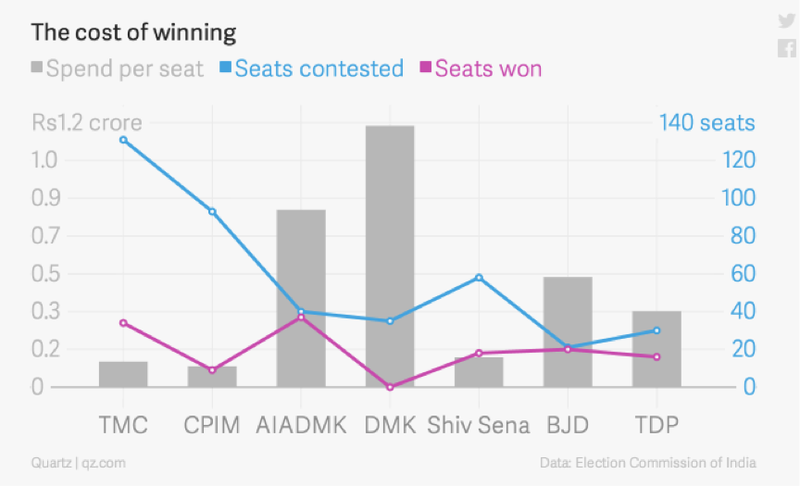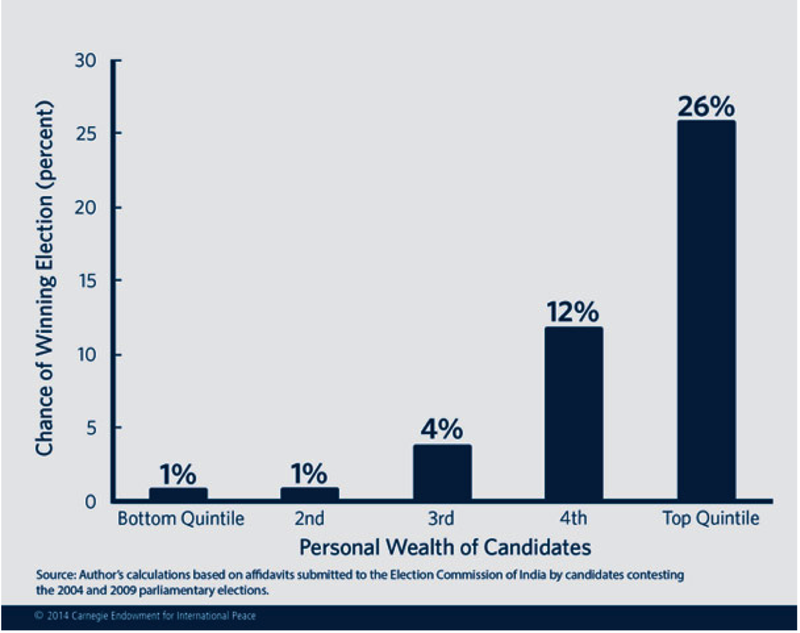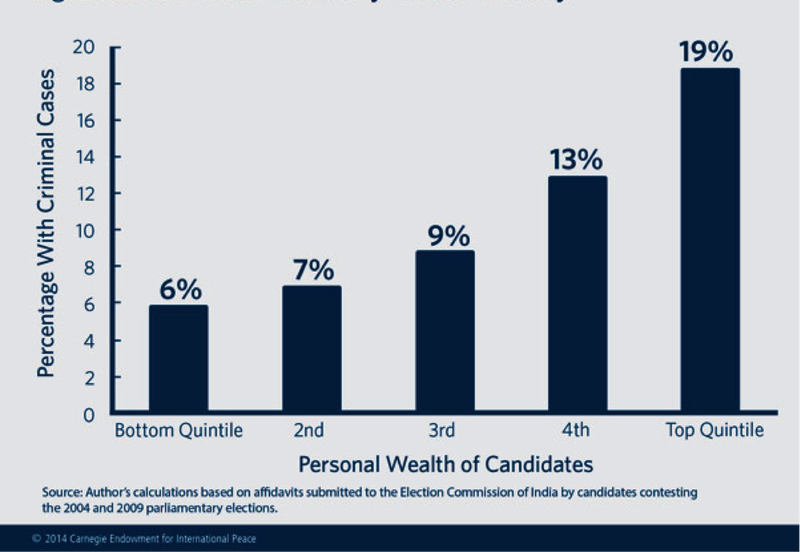Snap Shot India: All that glitters is not gold – The curious case of money and politics in India

One of the strongest criticisms of the unfettered flow of money into politics is that money wins you elections. Thus, those who are better financed, whether self-funded or through donors, have an unfair advantage in electoral competition. They are able to spend more on campaigning and getting their message out, as well as on less savory activities such as vote-buying. All this goes against the very fundamental principles of free and fair elections, as enshrined in Article 21 of the Universal Declaration of Human Rights.
Especially in the context of the United States, the idea that candidates and parties try and outspend each other in order to win seats and races — and that this actually works — is one that is taken almost for granted. Yet the empirical evidence for this relationship between election spending and election outcomes is mixed at best, with some studies finding positive correlations, some conditionally positive correlations (spending matters more for challengers than incumbents) and some having neutral or no relationships.
Enter India, the world’s biggest democracy. Similarly to other democracies, the costs of elections in India continue to rise – the 2014 elections being the most expensive in the history of India, with estimates at around the $5 billion dollar mark, which would make it three times more expensive than the previous general elections of 2009.
So how much does it cost to win a seat in India? Apparently, that depends on who you are. The figure below, courtesy of Quartz India, shows the spending per seat (total expenditure divided by the total number of seats contested), and the number of seats won, for all but the two biggest parties, the BJP and the Congress Party.

Boy, is there little relationship. You can only imagine you’d be pretty ticked off as a DMK candidate – which spent almost $200,000USD per seat it contested to win absolutely zilch.
Our non-resident India experts at the Electoral Integrity Project, Eswaran Sridharan and Milan Vaishnav, argue that in India the real relationship exists not between spending and election outcomes, but between funding and getting nominated as a candidate in the first place. Indeed, as the graph below (courtesy of the Carnegie Foundation) shows, the richer the candidate, the higher the likelihood of electoral success.

With the heightened costs of elections together with the unrealistically low legal spending limits, parties turn increasingly to illicit sources of funding and thus place premiums on candidates that bring their own money-tree so to speak.
So who has enough money to get nominated and win elections in India? Movie stars, sports stars… and increasingly those with a criminal record. As the image below shows, the wealthiest candidates are also most likely to have some kind of criminal conviction against them. Indeed, in the 2004 or 2009 elections, a candidate with no criminal record had a 7% chance of winning election, compared to a 22% chance of winning for a candidate with a criminal charge.

At this point you might be asking, but surely this is why we have regulations around the flow of money into politics? And it’s not that India doesn’t. It’s just that the regulations they do have respond to the continued dominance of the state in the economy, perpetuating a system of hand-in-glove relations between politicians and business people (both legal and illegal). This is compounded by the toothless ability of the Election Commission of India to exercise any authority over these matters.
But not all regulations are created equally. And an ongoing theme in our case analyses of political finance regulation reforms – regulations without enforcement aren’t worth the paper they’re written on.
For a little bit of good news? As Julia Keseru reported in an earlier blog post on the opacity of political money, there is some slow change being implemented in the area of transparency. Sridharan and Vaishnav attribute this trend to civil society organizations, media and even the courts. Civil society, especially an organization known as the Association for Democratic Reforms, was critical in pushing through the “Right to Information” act of 2005. In 2013, the Central Information Commission ruled that the six major national political parties were in fact public entities and therefore subject to disclosures under the RTI Act — a ruling which is still being fought by political parties today. Perhaps increasing transparency is a first step toward meaningful reform?
Dr. Andrea Abel van Es joins the Electoral Integrity Project team from her position as lecturer in the Ford Dorsey Program in International Policy Studies at Stanford University. She received her Ph.D in political science from Stanford University in 2011. Her dissertation was on civil society and interest groups during regime transitions, with a focus on the Communist transition in East and Central Europe. She is a co-founder of the IPRE Group, and consults for local and international development and aid organizations, particularly in the field of design and implementation of impact evaluation projects, as well as quantitative analysis more generally. Hungarian and Australian by cultural background, she speaks several foreign languages and has travelled and worked extensively overseas.

